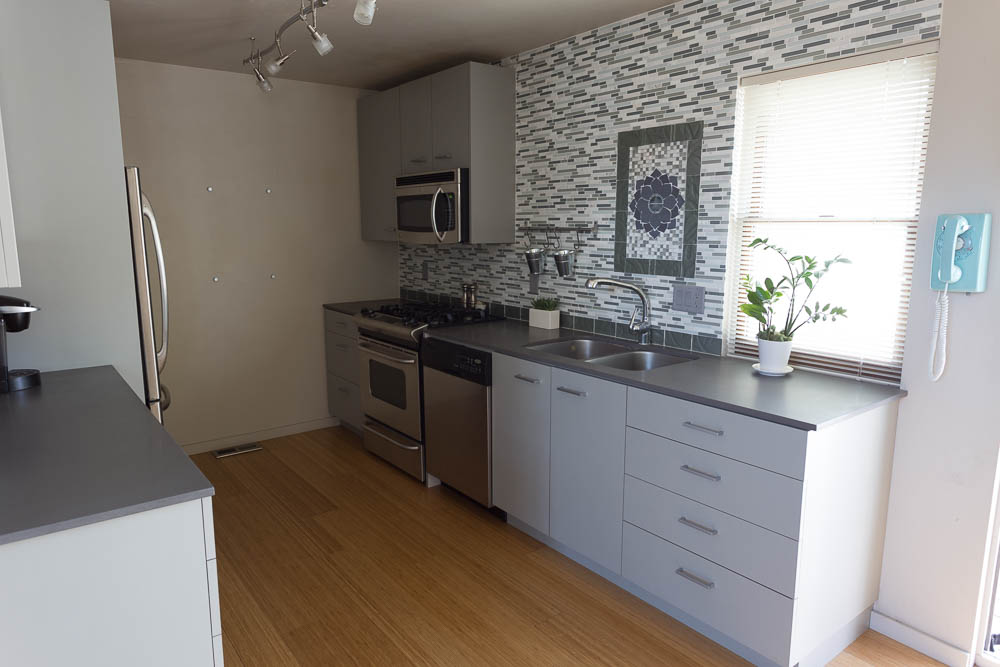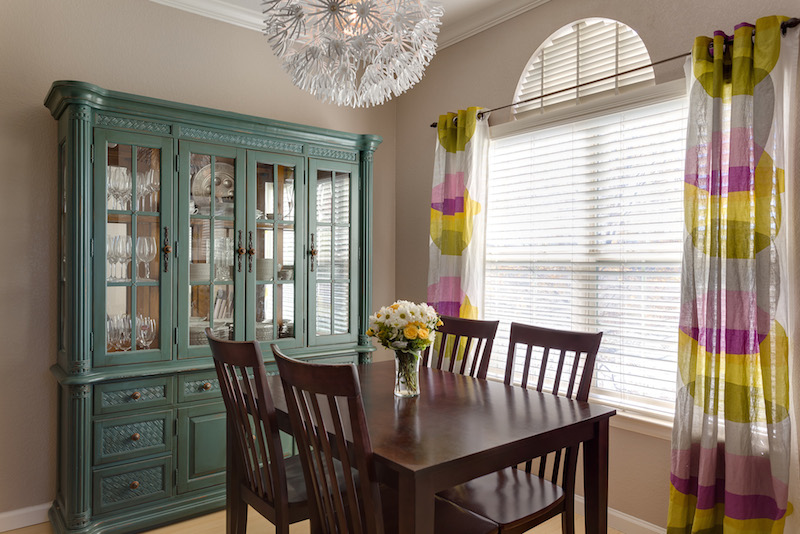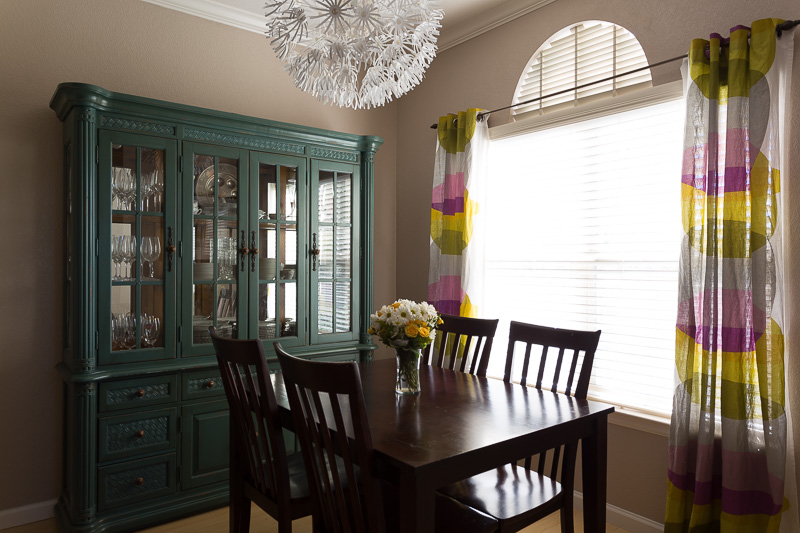While most of the posts in this blog are meant to educate potential clients and provide a bit more insight into the process of architectural photography to non-photographers, I thought I’d take a break and perform a brief PSA for the few photographers that somehow make it this far into my website.
Read moreWhy Hire a Specialized Interiors Photographer?
The value and production of photography changed in 1900, when Kodak introduced the Brownie camera, saying “You push the button, we do the rest.” The reduced cost and increased simplicity of creating an image enabled millions of amateurs and hobbyists to click away and deliver the quickly-named “snapshot” to the modern world. Ever since, Polaroid, “one-time-use”, instant, digital cameras, “point-and-shoot”, cellphone cameras etc… have hammered deeper and deeper into the minds of photo-viewers all over the world that anyone can take a picture, everyone is a photographer. This faulty idea misleads many businesses into believing that they can and should take their own photographs, but it also blurs another line.
If everyone is a photographer, then a PROFESSIONAL photographer must certainly be able to shoot anything, right?
Unfortunately, that is not always the case.
Read moreHow to Pay the Price of Photographing Your Projects
As a small business owner, I understand the difficulties that come with trying to establish your own company. There are so many things to do, so many aspects of the operation to manage, and endless costs to cover. You need to market your product or service in order to earn new business, but you need to afford the costs of marketing. It’s the old dilemma of “what came first?”
With so much to think about, it seems that most design firms, trade professionals, architects, etc… forget about the visual side of marketing and the images that represent their work. Leaving little to no budget for photographing and documenting your work can really hold the growth of your business back, as you’re not always showing off your work in the best light, and in turn limiting the overall effectiveness of your marketing efforts.
Read more5 Goals For Your Business and How Arris Photography Can Help You Reach Them
I'm a bit obsessed with goals, in all honesty. I set myself short term goals, long term goals, stretch goals, and that's just to name a few. As if that wasn't boring enough, I also read a lot on and around the subject… for fun. In that standing obsession, I've come to realize that my job is essentially just helping other people and businesses reach their own goals. With this being the season of reflection and goal-setting, I thought I could specifically highlight how Arris Photography can help you reach your business goals this year.
Read more
The Benefits of Specialization
Buried in my contact form, there’s a small note that reads, “I specialize in architectural photography; I don't shoot weddings, portraits, babies, etc…” Early in my transition to this career, I knew I wanted to specialize in one area of photography. We now live in an world in which really good cameras are ubiquitous and anyone can hang their shingles and call themselves professional photographers. So, what’s an aspiring professional photographer to do in the face of this onslaught of people? The answer is simple: specialize and focus. Years later I can look back and say that specializing on photographing commercial architecture and interior design has been one of the best decisions I’ve made. If you’re curious, keep reading to learn how turning down work can actually pay off.
Read moreCost Sharing and You!
I recently shared that the overwhelming reason potential clients don’t hire a professional photographer to document their projects is cost. Understandably, there can be a bit of sticker shock when you receive that first estimate from a commercial photographer; However, what if I told you there was a way to reduce the cost of photographing your projects without having to guilt your neighbor’s tech-savvy teenager into doing it. That’s right! I’m suggesting a way of commissioning photography for your projects without having to sacrifice quality or even the amount of images you would normally expect from hiring a professional.
Read moreWhy Interior Designers Don't Hire Professional Photographers
Lately, most of my time has been spent shooting residential interiors and design, which means meeting new and potential clients. Whether I am in a meeting or portfolio showing, at a design show or making cold calls to potential clients, I try and always find out if a designer has worked with a professional photographer in the past, and if so, what went wrong. As I meet more and more talented designers letting their projects go un-photographed, I’m receiving the same handful of answers. Here are the top 5 reasons I have been given for not hiring a professional architectural or interiors photographer, and my response to how Arris Photography can help:
Read moreStill Alive
I realized one day that I have not written much at all on here, but boy was I surprised to find out just how long it had been. Why? Honestly (and I loathe when people say this), it has been incredibly busy around these parts - both professionally and personally. So to not belabor the point, I thought I would give a quick recap of what I was up to since the last blog post.
Read moreOben CT-2491 Carbon Fiber Tripod Review
Theoretically, a good set of tripod legs should last a very long time and outlive several camera bodies. However, you quickly learn that what you initially thought was a nice feature or a ‘must-have’ need turns out to be either cumbersome or completely irrelevant to your day-to-day workflow and you realize it's time to upgrade.
Read moreAttack of the Drones!
Oh boy, the busy real estate season is just around the corner and many of us photographers are ready to come out of hibernation! Besides the Hatchimal craze, the biggest trend I've noticed this winter has been the proliferation of "drones". I know you've seen it too. Your neighbor has one. Your nephew Timmy just got one. Hell, even I received (another) one as a gift this year.
Naturally, this has caused a spike in the interest for commercial aerial photography and video services, especially here in the Northern Colorado real estate scene. But before you offer Timmy $20 to take some aerial photos of your new listing, there are a couple of important things to consider.
First, and most importantly, a FAA remote pilot airman certificate is still required for all commercial flights. This is a fairly rigorous test, but ensures that the person operating the drone knows the various classes of airspace that dictate where one can and can't fly. For example, there are certain neighborhoods in Loveland and Fort Collins I simply won't fly in due to restrictions. Ask yourself, do you trust Timmy enough to know when an how to file for authorization to fly in restricted airspace?
Another huge consideration is insurance. Did you know that the liability insurance most photographers carry for their business (if they're insured to begin with) will not cover drone incidents? And while most homeowners insurance policies cover hobby aircraft, those policies do not cover any commercial aircraft operations. There are liability policies that do cover commercial drone incidents but they are ridiculously expensive right now.
To sum it up, the amount of resources (both time and money) spent by operators to obtain their part 107 certification and the high cost insurance is mainly what's driving the high prices for aerial drone photography, not just in Fort Collins, but all across the country. Sure, you can find someone that can take a set of pictures for $5 bucks, but guess who the client is coming after if someone goes horribly wrong?
Cleared for Takeoff!
Yesterday, the Federal Aviation Administration (FAA) made a big announcement and unveiled "Part 107". This hightly anticipated ruling advances a new set of rules to govern the use of drones by commercial operators. This is huge for real estate and architectural photographers, but I just wanted to let the dust settle before I gave my 2 cents.
Before yesterday anybody using drone for profit — from real estate agents to surveyors to photographers — had to have a pilot's license and apply for a Section 333 Exemption, which only a handful of people had done in Colorado (none in Northern Colorado). The updated regulatory framework replaces that license with a knowledge test and certificate specific to flying a drone — allowing companies a much cheaper, faster, and simpler path to getting in the air.
This does make it significantly easier to use a drone for commercial purposes, but there are still certain conditions that need to be met in order to LEGALLY operate a drone and get paid. Briefly:
• FAA waiver must be submitted via an online portal if operating outside of Class G (uncontrolled) airspace. Operations in Class B, C, D and E airspace need ATC approval.
• The person operating the drone must have a remote pilot certificate with a small UAS rating, or be under the direct supervision of a person who holds such a certificate.
•The drone must also be registered with the FAA. Numbers need to be displayed on the drone.
•For a remote pilot certificate, an individual must either pass an initial aeronautical knowledge test at an FAA-approved knowledge testing center or have an existing non-student Part 61 pilot certificate.
I'm a big fan of this new ruling; however, I'm a bit disappointed that carrying liability insurance isn't mandatory under Part 107. I understand, insurance that covers drone mishaps isn't cheap, but ask yourself, can you afford not to in case something goes wrong?
Let's Get Something Straight
Every now and then, I'm asked to identify what is the most important skill in real estate photography by agents looking to shoot their own listings and other photographers that don't typically shoot real estate or architecture. One thing immediately comes to mind: making sure vertical walls are, in fact, vertical!
Why are verticals so important? Because we live in a world where 99% of vertical walls are plumb and designed to be 90° perpendicular to the ground; our brains expect this. However, I believe that verticals are so important in real estate and architectural photography because it's a clear indication of skill level. Most real estate images with converging verticals are typically taken by inexperienced photographers who simply don't know better, or worse, simply don't care.
Fortunately, it is easier than ever these days to correct converging verticals, and I'll demonstrate various methods throughout the next few posts. Simply fixing verticals and making sure they are parallel to the right and left edges of the frame really is that one magic bullet that can take your photos to a different level. See for yourself!
Making Lemonade
What a crazy week! Went up to Aspen with intentions of shooting some rooms in a cozy 17,000 sqft cabin. On the way up, I'm notified that the kitchen floors are being re-finished, so I'd have to "work around it." Also, the couches were being re-upholstered so there was no furniture in the living room, but that's OK, I can just "photoshop something in!" Something about the best-laid plans of mice and men...
Fortunately, I was pelted with some lemons, and the week was not a complete waste. In the end, I got to shoot on 4 locations and made some great photos, which should be up soon!
Pairing 6D with TP-Link TLMR3040 router aka "Scamranger"
I cannot describe how important the ability shoot tethered AND wirelessly is to being able to work efficiently on location. As a result, the Camranger has become one of the best pieces of photography gear, especially for architecture or real estate photography.
Briefly, the Camranger is a portable wireless router that allows you to set up a Wi-Fi hotspot anywhere and use it to operate a camera via a wireless device such as a phone or tablet. It makes chimping a shot much easier now that you don't have to constantly run back and forth to to check the LCD after each adjustment. One of the biggest downsides to using a Camranger is the cost, which is $300! Not terribly expensive, but something to consider when factoring backup gear/replacement costs.
Fortunately, there is a much, more reasonably priced option (for those of us not rolling in those types of Mike Kelley residuals) that yields the same functionality as the Camranger for under $50. "Witchcraft!" you say? Not really. All it takes is a couple of minor purchases, 2 downloads, 30 minutes, and a willingness to tinker. I couldn't believe how easy it was to pair this device with my Canon 6D and have a functional clone of my Camranger (or "Scamranger" as I affectionately call it) in such a short amount of time.
THE GRITTY DETAILS
First, you'll need a TP-Link TL-MR3040 portable router ($30). You'll notice that this router looks similar to the Camranger, and that's because IT IS THE EXACT SAME ROUTER, just rebranded. Sure, the Camranger has altered the firmware and it's own app, but we can easily fix that.
Second, you'll need to download a couple of firmware updates based on OpenWRT (open source). The first update will replace the TP-Link's factory firmware with OpenWRT, while the second update will allow us to us use a 3rd-party app to connect the camera to the router.
Finally, you'll need to download qDSLRdashboard (free for Android, $10 for iOS) to connect to the router and control your camera wirelessly.
There are a couple of nuances to setting this all up, but it really is simple. For a more detailed guide, you can either read through the steps HERE, or watch THIS video tutorial if you're a more visually-oriented learner.
Before & After & Squarespace
One of the more important features that I knew I wanted to have ready on the new site ASAP was a "Before and After" slider for images. In architectural and real estate photography, nothing compares to the simple "show-and-tell" approach when conveying the differences between a well crafted image from a hastily taken snapshot. Moreover, when editing is done well, it can be difficult to tell what exactly has been done to an image, even if changes were drastic. Every once in a while someone will tell me, "How difficult can taking a picture of a room be? You just point the camera and press a button!" Sigh, If only it was that simple...
The easiest way to demonstrate these differences would be to simply create a collage showing the 2 images side by side; however, a more elegant way to do this is to overlay 2 images on top of each other and use a slider to reveal changes.
There are various ways to accomplish this in Wordpress. Unfortunately, only 1 way (so far) to do this in Squarespace. Luckily, other people ran into this problem and came up with a clever workaround. I won't go into all the details, but to see step-by-step instructions (including a download link for the code) see Anthony Kramer's post on Mass Exodus' blog.
It's Alive!
I recently decided to switch my website over to Squarespace! After years of ups and downs dealing with the wild west that can be Wordpess, I caved and opted for the easy solution. Sure, I did sacrifice functionality customization for convenience, but now that I'm busier than ever, it's nice having a site that just works! What happens to previous posts? I suppose that wisdom is now lost forever... In all honesty, I looked through my archives and there was little that needed to be salvaged. Any of the content that was somehow useful or relevant to other people (mainly other photographers) could use with a bit of updating anyway.















